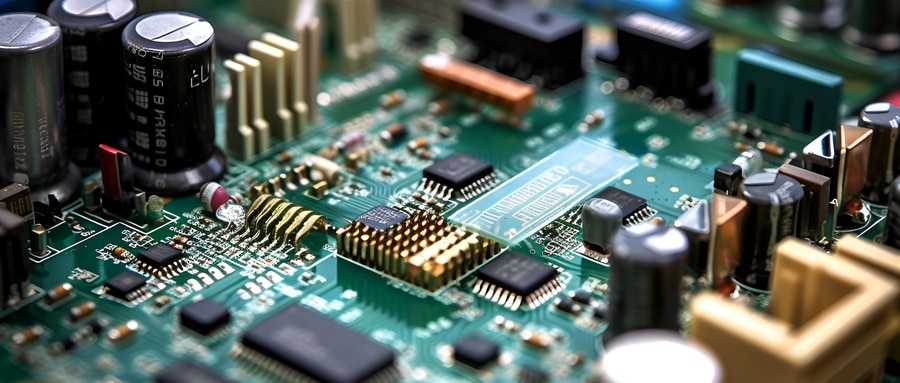Hotswap PCBs: Enhancing Flexibility in Modern Electronics
Imagine being able to modify components on your device – say a keyboard – without soldering, technical assistance or risk of mishap – something Hotswap PCBs (Printed Circuit Boards) make possible! They are an innovative user-friendly technology which is changing electronics world forever.
Hotswap PCBs make component swapping easier than ever, offering greater customization options and user flexibility without risk of damage to devices while powered on. This user-centric technology has opened up greater customization and flexibility options for end users – especially hobbyists, gaming enthusiasts, and tech enthusiasts. Here is why:
1. Customization Ease:
Hotswap PCBs make customization simple by enabling users to easily add or replace components without soldering, opening up customization to everyone – even those without extensive electronics knowledge! Now anyone can customize their gadget to meet their own individual needs and preferences without the need for expensive electronics expertise.
2. Encourage Experimentation:
Hotswap PCBs promote experimentation by making component replacement easier and safer, encouraging experimentation with new components or configurations. This feature is especially important in mechanical keyboard communities which prize personalizing their keyboards to their individual tastes.
3. Extended Lifespan:
Hotswap PCBs allow easy replacements of worn-out components, thus increasing device longevity and encouraging repair rather than replacement culture. This feature reduces electronic waste while emphasizing repair over replacement.
4. Ease of Diagnosis:
Hotswap PCBs make diagnosing and fixing issues much simpler for both developers and technicians, with faulty components easily identifiable and replaced to decrease solution times while increasing customer service levels.
Hotswap PCB’s primary application lies within keyboards – specifically mechanical ones. Custom mechanical keyboards have experienced an explosion in popularity recently due to user desire for more personalized typing experiences. By employing hot-swappable mechanical keyboards instead, users can alter switches as desired transforming customization from an insurmountable task into an enjoyable and achievable endeavor.

Hot-swap usage is most notable within server and PC construction. Data centers frequently utilize hot-swap hard drives that enable easy replacement without shutting down services, providing uninterrupted services.
Hotswap PCBs are revolutionizing electronic device usage. As technology becomes an integral part of everyday life, demand for customization and personalization increases exponentially – Hotswap PCBs serve as a testament to this shift, offering an exciting glimpse of user-friendly electronics in the near future. Hotswap PCBs give you power over every aspect of your gadgetry!
Hotswap PCB FAQ:
- What is a Hotswap Printed Circuit Board?
A Hotswap Printed Circuit Board is a type of circuit board where the components, typically switches or keys, can be replaced while the system is still running, without causing any disruption to the operation of the device. - What are the benefits of a Hotswap Printed Circuit Board?
Hotswap Printed Circuit Boards allow for easy modification, repair and upgrading of your device. For instance, you can test different switches on a keyboard without needing to solder and desolder each time you make a switch. It’s also great for beginners who want to customize their devices without being proficient in soldering. - Are Hotswap Printed Circuit Boards more expensive than regular PCBs?
While specific prices depend on the particular manufacturer and complexity of the board, in general, Hotswap Printed Circuit Boards can often be slightly more expensive than regular PCBs due to their advanced design and the requirement of hot-swap sockets. - Can all components be replaced in a Hotswap Printed Circuit Board?
Not all components can be replaced. Hotswap Printed Circuit Boards usually allow specific components like switches or keys to be replaced. The ability to hot swap other components often depends on the specific design of the board. - How to install Switches on Hotswap Printed Circuit Boards?
Switches can be installed on a Hotswap Printed Circuit Board simply by aligning the switch over the hot-swap socket and pressing down until it clicks into place. - Are there any risks associated with Hotswap Printed Circuit Boards?
The primary risks with Hotswap Printed Circuit Boards revolve around the improper installation of switches, which can bend the pins, loosen hot-swap sockets, or break the socket. - Can Hotswap Printed Circuit Boards be used for mechanical keyboards?
Absolutely! Hotswap Printed Circuit Boards are particularly popular for mechanical keyboards as they provide flexibility to try different switches without the need for soldering. - Is soldering required for Hotswap Printed Circuit Boards?
No, the main advantage of Hotswap Printed Circuit Boards is that they don’t require soldering for switch changes, making them a convenient option for those who may not have soldering expertise or toolset. - How durable are the sockets in Hotswap PCBs?
Hotswap sockets are quite durable, but their lifespan can be affected by the frequency of changes. Repeated removal and insertion of different components can wear out the sockets over time. - Can I convert my regular PCB to a Hotswap PCB?
Yes and no. It’s possible to install hot-swap sockets onto a regular PCB, but it requires selected PCBs which have compatible spaces and size with hot swap sockets. It may also require soldering skills for socket installation. It’s recommended that novices use a PCB designed for hot-swapping.























